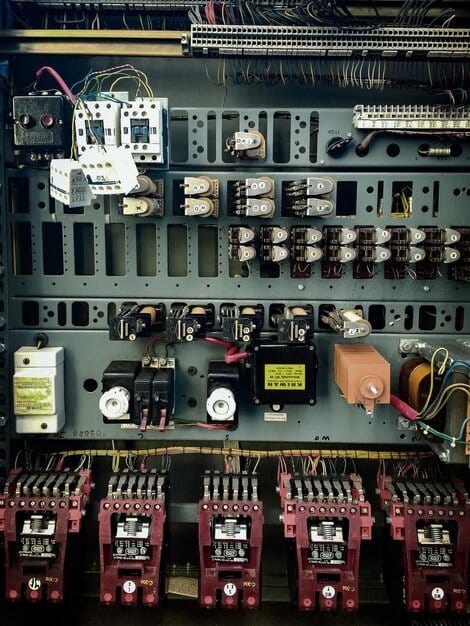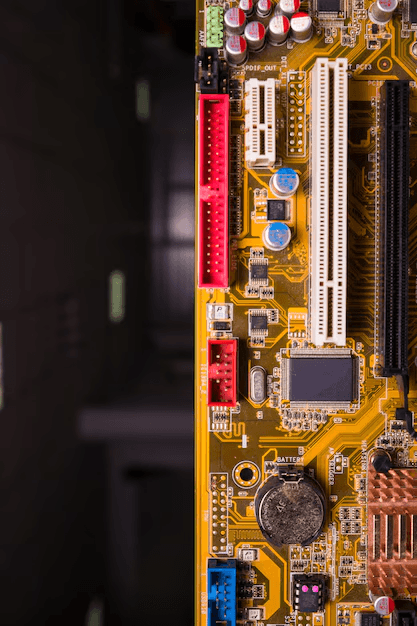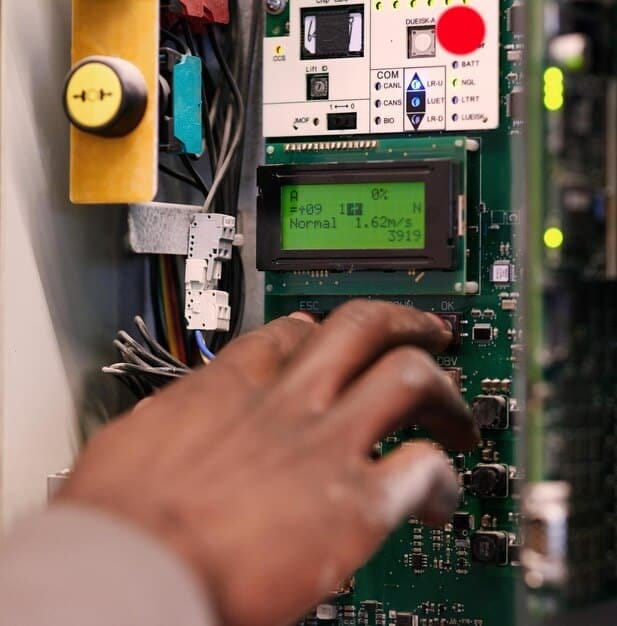Controlled Impedance
CAMTECH's Controlled Impedance
Enjoy ultra clean signal with CAMTECH’s expertise in controlled impedance. However, when utilizing complicated circuits, there is always a necessity to make certain your boards are able to deliver the required high performance. Thus, one of the significant areas of concern should be the impedance of your boards. Controlling the impedance of the boards result into better board functioning.
In this guide, we’re going to explain to you what impedance control is and how exactly you should request impedance control for new PCBs. In addition, here is the guide for trace impedance.
Understanding controlled Impedance
Controlled impedance is a technique of arriving at the planned electric circuit’s actual resistance to the flow of alternating current. That resistance is defined concerning resistance as well as reactance in the circuits. Impedance is important in a circuit since it determines the time on the circuit’s schedule for performing a given function. It affects the schedules of critical processes – and the credibility of the organization. In this case, controlling the impedance by changing the physical structure of a board’s components to make it have a certain value ensures that the board functions as intended. It is required so that the impedance of the circuit is controlled and is commonly used in designing PCB for high frequency, analog or high speed digital signals.
Impedance, commonly represented in Ohms, is one of the peculiarities of the circuit that needs to be addressed during the creation of the PCB. Resistance and reactance of an electrical circuit are also significant as some processes require others to execute to enable the circuit’s functionality. This chain of command interferes with a system and results to a failure if these actions are not done as per plan. When the impedance requirements are printed on the circuit boards, it will counter the changes that are taking place in voltage and produce an appliance or a gadget that is expected to function will do so.
Thus, the key to managing differential impedance PCB components is obtained for a variety of products. There are programs we can suggest that are aimed at detecting the flow of resistance and reactance, and we shall be glad to avails these specifications to you. Through this source, MCL will make other additional or customized PCBs. Thus, the obtained circuitry is more economical and offers increased reliability at the same time.

What is a PCB Transmission Line?
Transmission lines critically call for control of the impedances in order to cure problems with the signals. Signal integrity mainly deals with the ability to broadcast signals in waves especially when it comes to high frequency signals moving over PCB transmission lines and this is a cardinal aspect of controlled impedance. The flow of a signal in a coordinated system of a transmitter and a receiver is limited if the impedance differs between transmitters; that results in a signal reflection. A part of the transmitted signal bounces back and adds to the actual signal received leading to distortion.
Sometimes a distorted signal cannot do what it is supposed to do. Ensuring that at each point you have a controlled impedance reduces signal distortions. Impedance control basics enhance the signal conditioning.
The physical size of the PCB is in inches, and the composition,/core dielectric materials of a PCB offer a measure of the impedance of a circuit which is expressed in Ohms.
What Are the Types of PCB Transmission Lines?
Stripline and microstrip lines are used to route high frequence transmission lines over a printed circuit board. All the PCB manufacturers widely employ two types, stripline and microstrip; however, the third type is also possible. Co-planar waveguide transmission lines is the third type but it is widely used much less than first two types.
Thus, each type of the transmission line has its advantages. Different designs require different specificities; thus, these particular types are more relevant for the PCB’s uses. It is conventional for there to be multi-layer boards in many densely and highly speed PCBs. These configurations incorporate the stripline and microstrip sections of the circuit.
STRIPLINE
A PCB with a stripline has a constant single line for the Signal on the internal layer of the circuit board. An unnamed dielectric material is provided on the PCB between the trace and the conducting planes disposed on two sides of the dielectric layer. Each of the two conducting planes is functional as a return path.
The second ground plane is also useful to have thin, controlled impedance lines. This is because, as the trace widths decrees, the density rises; thus, stripline transmission lines are more suitable for compact designs. Its internal layer is the hazard protection, also Stripline can help to minimize influence of the electromagnetic interference (emi).
MICROSTRIP LINE
It announced that while a stripline has an embedded trace, the microstrip has only one uniform trace implemented on the outer layer of the PCB. The trace is in a layer alongside the return path of the ground plane conductor. PCB dielectric keeps the trace away from the ground planes. Due to having a considerably fewer number of layers, manufacturing costs of microstrip line are considerably cheaper.
Bilateral microstrip circuits of matched signals are called differential microstrip line which can transmit high speed signals.
PCB Transmission Lines That Require Controlled Impedance
The actual functionality of the PCB is not affected by the solder mask finish (whether glossy or matte); its color selection is largely a matter of aesthetics. Matte finishes, known for their subdued appearance, minimize light reflection but are prone to scratches, aiding in easier PCB diagnostics under ample lighting. Glossy finishes, on the other hand, offer a brighter appearance with increased light reflection, making scratches less noticeable, although they might complicate inspection processes due to their high reflectivity.
Despite their differences, both finishes are produced through the same process and come at a similar cost, allowing the selection to be based primarily on visual preference. Ultimately, the choice of solder mask color should align with the specific needs of your project.
- Single-ended microstrip
- Differential pairs of microstrip
- Embedded microstrip
- Single-ended stripline
- Differential pairs of stripline
- Single-ended co-planar waveguides
- Differential pairs of co-planar waveguides

Factors Influencing Impedance Control in PCB Design
For impedance control in the design of PCB, there are some of the factors that determine the control of the impedance namely; the width of the trace, thickness of copper, thickness of dielectric and the dielectric constant. Here’s how each factor impacts impedance:
Trace Width: This is the width of the copper foil or the copper layer of the PCB including the coating if any. With reference to the second aspect, impedance has the general trend of decreasing with the increase in trace width. Other features that PCB designers use while defining trace width include the current capacity as well as the amount of heat that the trace should be able to produce. If one desires to achieve a certain amount of impedance, then the width of the trace can be extended as needed.
Copper Thickness: Other important aspects of impedance include the copper thickness, that is the thickness of copper layer on the PCB. Likewise, higher thickness of copper reduces the impedance in the same manner as the case of width of the trace. Designers are capable of improving the impedances to a lesser or higher one by enhancing the copper weight and thickness. On the other hand, there is an increase of impedance upon thinning the copper layer in the printed circuit board.
Dielectric Thickness: Relative to the former, dielectric thickness means the thickness of the insulating material between a pair of traces. It is clear that the thickness of dielectric has logarithmic proportion with the impedance, this implies that when the dielectric thickness is increased, the impedance increases at little rates. In a bid to lower the impedance, there is always the freedom of thinning down the insulation layer significantly.
Dielectric Constant: The dielectric constant is the measure of a material’s electric constant with regard to that of the vacuum. Typically in PCBs, dielectric constant decreases with increasing frequencies; this is a normal trend. Having the dielectric constant value as low and as close to a stable magnitude as possible at high frequencies is also desirable, while fluctuations in the dielectric constant result to unforeseeable changes in the impedance.
When Is Impedance Most Important?
Through impedance control, operations carried out in the printed circuit boards (PCBs) are enhanced enabling faster processing while at the same time cutting on energy. When the impedance control is applied to the PCB design, it increases the product value and guarantees it will operate reliably for a longer time.
Decoupling is particularly important when going from a low Ohm value to a higher Ohm value. These transitions can lead to energy reflections; the shock wave is created and it becomes a pulse breaker of energy. This issue poses a special concern for the manufacturers of power driven digital equipments and commonly in radio frequency (RF) devices.
At CAMTECH PCB, EMI is also handled through the incorporation of special printed circuit boards with impedance control fabricated in during production. Reflection pulses interfere with the functioning of the electrical and signal circuits and add distortion that can be detrimental to neighboring components. This disruption hampers the flow of energy and results to product failures sometimes.

Common Mistakes to Avoid in Controlled Impedance
Trace width inconsistencies: What you should realize is that with PCB, only one trace width is possible with each layer. If the specifications of the construction state, then it means that: 004-inch and . If you specify that you want a 1-ounce copper trace for the same board layer and the same impedance as 008-inch trace your fabricator will have to pause production and wonder which of the two figures you wish to use.
Failing to specify layers: Some of your specifications may be related to single or several layers of your PCB while others may be general for all the layers of the PCB and if you do not qualify which specification belongs to which layer your fabricator will take understanding that you intended the general specification to be applicable to all the layers. For instance, if one has a dense board or a board with twenty layers or more, the confusion results in excessive and unwanted work and time wastage.
Unreasonable impedance targets: The percent impedance tolerance can vary and it is most commonly around +/- 10%. To the extent of requesting a much tighter impedance tolerance the fabricator will be forced to stop work and inquire whether it was an error. Very small tolerances are always much more costly because any impermissible deviation that can otherwise be tolerated leads to a lot of scrapped products. So, check whether you have stated the correct range.
Notes and stackup inconsistencies: Ensure that all the information you include on your documentation corresponds to that submitted online. When the stackup image in your CAD design is different from the specifications written in your notes, there will be likely time lags while the clarifications are made. It also sometimes happens that the CAD drawing was made by including a standard stackup image rather than stackup that was made according to the design of the object — such disadvantages also cause the delays.

